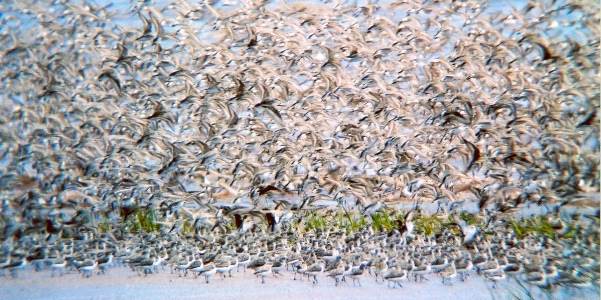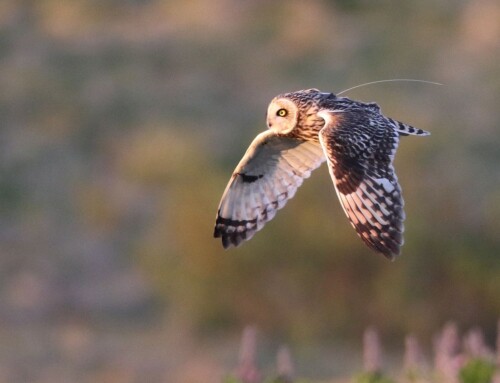What happens to feeding birds when they have to deal with sun glare?
LINKED PAPER
Does sun glare increase antipredator behaviour in prey? Beauchamp, G. 2017. Journal of Avian Biology. DOI: 10.1111/jav.01154. VIEW
Anyone who has driven a car as the sun slowly sets has experienced difficulty seeing obstacles and road signs. Indeed, sun glare has been blamed for thousands of car accidents and dozens of deaths on the roads every year. It seems likely that direct sun glare should also have an influence on the lives of animals. In particular, species of prey with sun glaring in their eyes would seem particularly vulnerable to predators. Less able to visually monitor their surroundings, prey species would be quite vulnerable to attacks coming from the general direction of the setting sun. Decreased detection could also be compounded by predators preferentially attacking their prey with the sun at their backs as a recent paper suggested in white sharks.
There is no conclusive evidence that direct sun glare plays a role in modulating predation risk for prey species. I investigated this topic in a unique system. The Semipalmated Sandpiper Calidris pusilla, a shorebird, forages in large flocks close to the receding tideline on mudflats. Mudflats are bordered by thick forest cover from which predator Peregrine Falcons Falco peregrinus launch surprise attacks. Forest cover in this area occurs in a southerly direction so that as the day progresses the sun gradually gets more and more in the eyes of sandpipers monitoring this area for danger. As the receding tide occurs at different times of the day over successive weeks, this system provides a unique opportunity to investigate the effect of sun glare when the birds are equally motivated to search for food. At two sites and over six years, I collected data on foraging behaviour by sandpipers in staked mudflat areas. I contrasted foraging behaviour on cloudy days and on days when the sun was glaring to examine whether birds adapted their behaviour as the sun progressively got lower over the horizon.

As the day progressed, sandpipers occurred in sparser groups when the sun glared but not when clouds obscured the sun, suggesting that fewer individuals engaged in risky foraging. Pecking rate and foraging success decreased later in the day when the sun glared but not otherwise implying an increase in vigilance at the expense of foraging. When more sun hit their eyes, sandpipers also moved faster suggesting increased skittishness.

These findings are relevant to any species foraging in open areas and could also play a role in the early morning when the sun rises. The temporal gradient in predation risk that the sun glare effect creates might thus apply broadly and have important consequences for antipredator vigilance, foraging efficiency, and habitat use.
References and further reading
Beauchamp, G. 2015. Animal vigilance: Monitoring predators and competitors. Academic Press, Oxford. VIEW
Fernández-Juricic, E. & Tran, E. 2007. Changes in vigilance and foraging behaviour with light intensity and their effects on food intake and predator detection in house finches. Animal Behaviour. 74: 1381-1390. VIEW
Huveneers, C., Holman, D., Robbins, R., Fox, A., Endler, J. A. & Taylor, A. H. 2015. White sharks exploit the sun during predatory approaches. American Naturalist. 185: 562-570. VIEW
Image credit
Featured image: Flock of Semipalmated Sandpipers Calidris pusilla foraging on mudflats © Guy Beauchamp
If you want to write about your research in #theBOUblog, then please see here.





